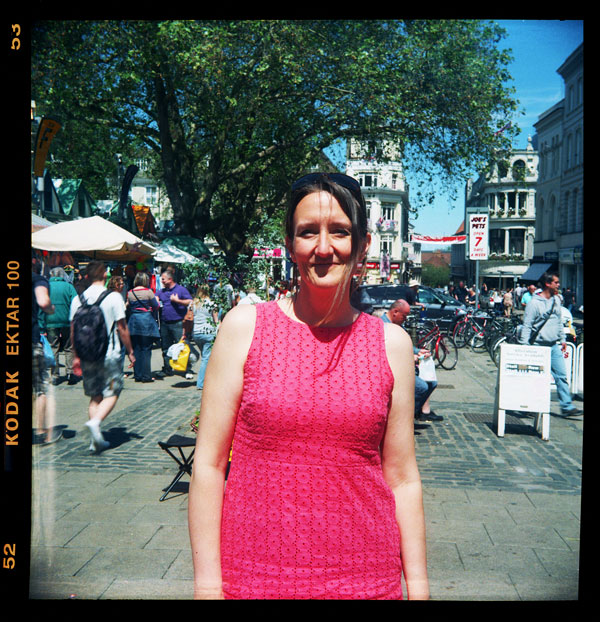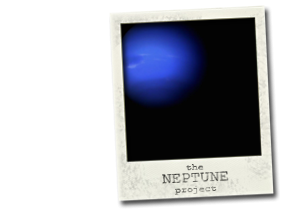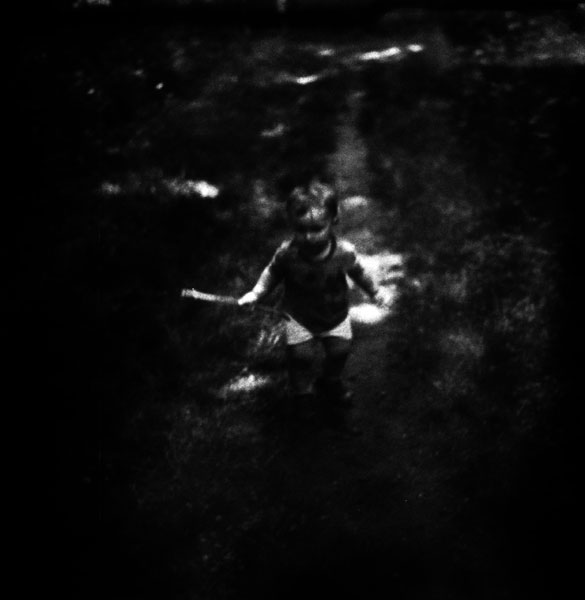Tag Archives: Voigtlander Brilliant
1938 Voigtländer Brilliant
 There has been quite a saga accompanying this camera. The Voigtländer Brilliant of 1938 was the world’s first focusing TLR, and as a template it has spawned several copies, most notably the Lomo produced Lubitels (of which we have two), but even if the copies are great – for reasons of lomography – they don’t quite have the pedigree of the Voigtländer. I realised after trustingly putting a roll of Ilford through it that the focusing mechanism was off kilter, so I resolved to try it again using zone focus and a roll of Ektar.
There has been quite a saga accompanying this camera. The Voigtländer Brilliant of 1938 was the world’s first focusing TLR, and as a template it has spawned several copies, most notably the Lomo produced Lubitels (of which we have two), but even if the copies are great – for reasons of lomography – they don’t quite have the pedigree of the Voigtländer. I realised after trustingly putting a roll of Ilford through it that the focusing mechanism was off kilter, so I resolved to try it again using zone focus and a roll of Ektar.
It has taken a while to get the camera this far. I bought it very cheaply last year and like all of the Brilliants, it hadn’t aged especially well. The finder was loose and rusted, the mirror had lost nearly all its silver, the film chamber’s painted interior was flaky and the counter wouldn’t move. I cut a new mirror and replaced it then set to work drilling out the rusted screws from the finder. I carefully removed the prism finder and put it out of the way: it’s a beautiful and precise piece of glasswork after all, then a few moments later heard a crash. I looked up to see that one of the boys had decided to have a look at this rather gleaming jewel, picked it up and promptly dropped it on the floor.
Even though I immediately recognised this as an excellent opportunity to practise mindfulness, I was still devastated. The entire corner of the prism was smashed and at first glance it looked as though the camera was going to have to go for spares.
In the end I cleaned it all up and put it back together anyway and found that because the finder hood covered a good portion of the prism, it was still in fact usable. I wasn’t able to fix the focus because the viewing lens was moving freely through its range in tandem with the taking lens, there was nothing to adjust. For some reason, it just doesn’t match up anymore. I suspected that this might be because the infinity stop had shifted but I checked the film plane for accuracy and it seemed good. So I loaded up some Ektar and took it to Norwich with me at the weekend.
The reason that focusing Brilliants with good glass are so desirable is not so much the focusing ability of the camera, but the quality of the Skopar lens. It operates at a very decent ƒ3.5, and is reputed to have excellent characteristics. The vast majority of surviving Brilliants have much less capable lenses than the Skopar.
Upon seeing a few of the results, I have to agree. This camera takes a great deal of patience to use, it is after all 74 years old now, and has taken a few knocks, both old and new, but it is still a classy performer all the same, as you can see.
Even so, I think I shall be selling it. Even without a focusing viewing lens, a partly smashed prism and a non-functional film counter I think I can get a decent price for it because the lens is gold, and as any serious photographer will tell you, the lens is pretty much the whole story, regardless of its innate style. I love plastic lenses, which cost a few pence, but they give a very different style. If you are looking for accuracy, then the Skopar beats many more modern competitors hands-down.
Plus, I recently bought a Yashica from Pakistan and I cannot really justify owning five TLRs!
Teddy Dusters, with stick
Voigtländer Brilliant (1938) / Cross-processed Ilford XP2
Fed 4, Jupiter 11, Tokyo Optical
 Over the last few days I have finished up film from the Gakkenflex, the Kodak Cresta II and the Voigtlander Brilliant (which had a mishap recently but still seems to be functional). My intention is to sell the Brilliant and put the funds towards a Yashica Mat TLR.
Over the last few days I have finished up film from the Gakkenflex, the Kodak Cresta II and the Voigtlander Brilliant (which had a mishap recently but still seems to be functional). My intention is to sell the Brilliant and put the funds towards a Yashica Mat TLR.
I have a Mamiya EE to test, not a very exciting camera, but you can pick them up for a couple of bucks apiece and, worst case, take them apart for the hardware. It can cost you twice as much to buy a small bag of camera screws on Ebay. And I picked up a Fed 4 body (for 99p) onto which I’ve fitted an old Jupiter 11 lens and a Tokyo Optical viewfinder, it looks kind of amazing (pictured). Soviet era cameras are always gratifying, for the experience as much as the results.
I am also cutting down a roll of Fuji Pro400 to put it into the Duex. It will be so precious to see the result of this sublime art-deco era lens on such a rich, smooth film stock.
Repairing the Voigtlander Brilliant
 A while back – maybe last year – I was lucky enough to find a Voigtlander Focusing Brilliant, the best Brilliant (superlatives notwithstanding) that money can buy with a Compur shutter, and a true TLR, unlike the majority of earlier faux-TLR models. The only real problem with it was that the mirror was so badly corroded that it was near impossible to focus.
A while back – maybe last year – I was lucky enough to find a Voigtlander Focusing Brilliant, the best Brilliant (superlatives notwithstanding) that money can buy with a Compur shutter, and a true TLR, unlike the majority of earlier faux-TLR models. The only real problem with it was that the mirror was so badly corroded that it was near impossible to focus.
This camera was manufactured in 1938 and it’s reputed to have a decent lens, so it seemed a real shame to just let it gather dust. I removed the finder (4 small screws inside the hood, 3 of which were rusted through) to reveal the mirror, which as you can see, is fubar.
In picture two you can see an old make-up mirror of Alice’s which was almost the right size, I cleaned it up and measured out the replacement mirror size and cut it to fit.
All said and done it was a very easy operation, the new mirror dropped right into place and now it is quite perfect, as good as new in fact, which isn’t bad for a camera that is about to turn 75!
So that (in the odd spare moment) is what I’ve been doing this week. I have also cleaned up a Kodak Cresta, fixed a light leak on a Voigtlander Bessa and loaded new colour film into a Box Brownie. The light hasn’t been great though this week, and the box Brownies only work well under the best conditions. Other than that I’ve processed film from the Mamiya C330, and also from the Kodak Duex, which looks pretty random on the negs, but we shall see soon enough.
I’m about to process a roll of Neopan 1600 that I shot through a lensbaby, I have no real idea what to expect, but I’ll get some galleries up soon.



